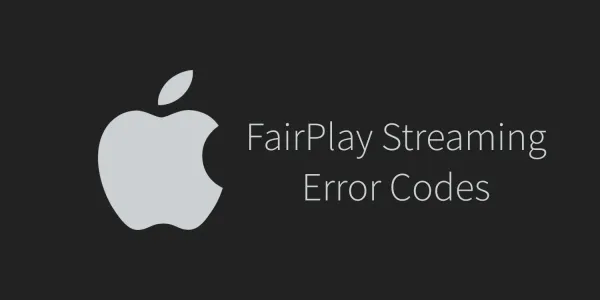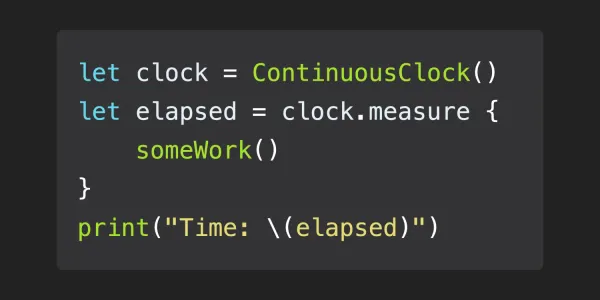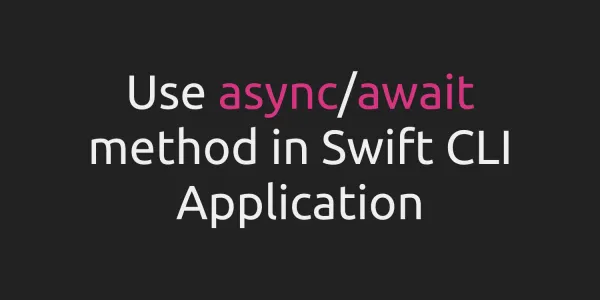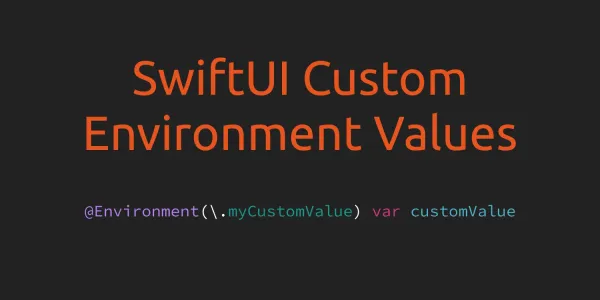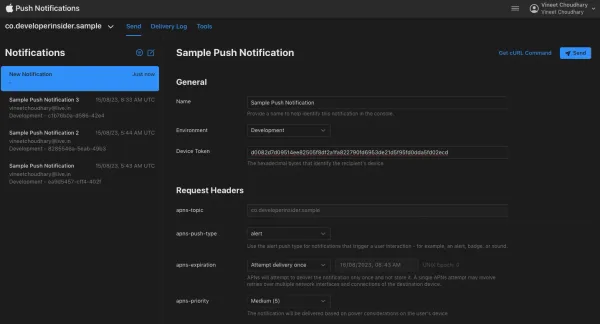Overview
- Double represents a 64-bit floating-point number.
- Double has a precision of at least 15 decimal digits, whereas the precision of Float can be as little as 6 decimal digits.
- Swift always chooses Double (rather than Float) when inferring the type of floating-point numbers.If you combine integer and floating-point literals in an expression, a type of Double will be inferred.
1. Converting Floating-Point Values
1.1 init(_:)
- Creates a new instance initialized to the given value.
let x: Double = 21.25
let y = Double(x)
print(x, y)
//prints 21.25 21.25
1.2 init(sign:exponent:significand:)
- Creates a new value from the given sign, exponent, and significand.
let z = Double(sign: .plus, exponent: -2, significand: 1.5)
print(z)
//prints 0.375
1.3 init(signOf:magnitudeOf:)
- Creates a new floating-point value using the sign of one value and the magnitude of another.
let a = -21.5
let b = 305.15
let c = Double(signOf: a, magnitudeOf: b)
print(c)
//prints -305.15
2. Performing Calculations
2.1 Floating-Point Operators for Double
- Perform arithmetic and bitwise operations or compare values.
Framework
print(a + b)
//prints 283.65
print(a - b)
//prints -326.65
print(a * b)
//prints -6560.725
print(a / b)
//prints -0.0704571522202196
a += b
print(a)
//prints 283.65
a -= b
print(a)
//prints -21.5
a *= b
print(a)
//prints -6560.725
a /= b
print(a)
//prints -21.5
2.2 squareRoot()
- Returns the square root of the value, rounded to a representable value.
func hypotenuse(_ a: Double, _ b: Double) -> Double {
return (a * a + b * b).squareRoot()
}
let (dx, dy) = (3.0, 4.0)
let distance = hypotenuse(dx, dy)
print(distance)
//prints 5.0
2.3 remainder(dividingBy:)
- Returns the remainder of this value divided by the given value.
let q = (x / 0.75).rounded(.toNearestOrEven)
let r = x.remainder(dividingBy: 0.75)
print(q,r)
//prints 28.0 0.25
2.4 negate()
- Replaces this value with its additive inverse.
var k = 21.003
k.negate()
print(k)
//prints -21.003
3. Querying a Double's State
3.1 isZero
- A Boolean value indicating whether the instance is equal to zero.
let m = -0.0
print(m.isZero)
//prints true
3.2 isFinite
- A Boolean value indicating whether this instance is finite.
let m = -0.0
print(m.isFinite)
//prints true
3.3 isInfinite
- A Boolean value indicating whether the instance is infinite.
let m = -0.0
print(m.isInfinite)
//prints false
3.4 isNaN
- A Boolean value indicating whether the instance is NaN (“not a number”).
let x1 = 0.0
let y1 = x1 * .infinity
print(x1 == Double.nan)
//prints false
print(y1 == Double.nan)
//prints false
3.5 isSignalingNaN
- A Boolean value indicating whether the instance is a signaling NaN.
let x1 = 0.0
let y1 = x1 * .infinity
print(x1.isSignalingNaN)
//prints false
print(y1.isSignalingNaN)
//prints false
3.6 isNormal
- A Boolean value indicating whether this instance is normal.
let x1 = 0.0
let y1 = x1 * .infinity
print(x1.isNormal)
//prints false
print(y1.isNormal)
//prints false
3.7 isSubnormal
- A Boolean value indicating whether the instance is subnormal.
let x1 = 0.0
let y1 = x1 * .infinity
print(x1.isSubnormal)
//prints false
print(y1.isSubnormal)
//prints false
3.8 isCanonical
- A Boolean value indicating whether the instance’s representation is in the canonical form.
let x1 = 0.0
let y1 = x1 * .infinity
print(x1.isCanonical)
//prints true
print(y1.isCanonical)
//prints true
3.9 floatingPointClass
- The classification of this value.
let x1 = 0.0
let y1 = x1 * .infinity
print(x1.floatingPointClass)
//prints positiveZero
print(y1.floatingPointClass)
//prints quietNaN
4. Rounding
4.1 rounded()
- Returns this value rounded to an integral value using “schoolbook rounding.”
let m1: Double = 6.5
print(m1.rounded(.toNearestOrAwayFromZero))
//prints 7.0
print(m1.rounded(.towardZero))
//prints 6.0
print(m1.rounded(.up))
//prints 7.0
print(m1.rounded(.down))
//prints 6.0
4.2 round()
- Rounds this value to an integral value using “schoolbook rounding.”
var j = 5.2
j.round()
print(j)
//prints 5.0
var h = 5.5
h.round()
print(h)
//prints 6.0
var g = -5.5
g.round()
print(g)
//prints -6.0
5. Comparing Doubles
5.1 Floating-Point Operators for Double - comparison
- Perform arithmetic and bitwise operations or compare values.
print(a > b)
//prints false
print(a < b)
//prints true
print(a <= b)
//prints true
print(a >= b)
//prints false
print(a == b)
//prints false
5.2 isEqual(to:)
- Returns a Boolean value indicating whether this instance is equal to the given value.
var a = -21.5
var b = 305.15
if(a.isEqual(to: b)){
print(a)
}else{
print(b)
}
//prints 305.15
5.3 isLess(than:)
- Returns a Boolean value indicating whether this instance is less than the given value.
var a = -21.5
var b = 305.15
if(a.isLess(than: b)){
print(a)
}else{
print(b)
}
//prints -21.5
5.4 isLessThanOrEqualTo(_:)
- Returns a Boolean value indicating whether this instance is less than or equal to the given value.
var a = -21.5
var b = 305.15
if(a.isLessThanOrEqualTo(b)){
print(a)
}else{
print(b)
}
//prints -21.5
5.5 isTotallyOrdered(belowOrEqualTo:)
- Returns a Boolean value indicating whether this instance should precede or tie positions with the given value in an ascending sort.
var a = -21.5
var b = 305.15
if(a.isTotallyOrdered(belowOrEqualTo: b)){
print(a)
}else{
print(b)
}
//prints -21.5
5.6 minimum(::)
- Returns the lesser of the two given values.
print(Double.minimum(10.0, -25.0))
//prints -25.0
5.7 maximum(::)
- Returns the lesser of the two given values.
print(Double.maximum(10.0, -25.0))
//prints 10.0
5.8 minimumMagnitude(::)
- Returns the value with lesser magnitude.
print(Double.minimumMagnitude(-10.0, 2.0))
//prints 2.0
5.9 maximumMagnitude(::)
- Returns the value with greater magnitude.
print(Double.maximumMagnitude(-10.0, 2.0))
//prints -10.0
6. Finding the Sign and Magnitude
6.1 magnitude
- The magnitude of this value.
let num1 = -259.0001
print(num1.magnitude)
//prints 259.0001
6.2 sign
- The sign of the floating-point value.
let num1 = -259.0001
print(num1.sign)
//prints minus
7. Querying a Double
7.1 ulp
- The unit in the last place of this value.
let num2 = 0.23
print(num2.ulp)
//prints 2.77555756156289e-17
7.2 significand
- The significand of the floating-point value.
let num3 = 9.91
print(num3.significand)
//prints 1.23875
7.3 exponent
- The exponent of the floating-point value.
let num3 = 9.91
print(num3.exponent)
//prints 3
7.4 nextUp
- The least representable value that compares greater than this value.
let num4 = 10.0
print(num4.nextUp)
//prints 10.0
7.5 nextDown
- The greatest representable value that compares less than this value.
let num4 = 10.0
print(num4.nextDown)
//prints 10.0
7.6 binade
- The floating-point value with the same sign and exponent as this value, but with a significand of 1.0.
print(num4.binade)
//prints 8.0
8. Accessing Numeric Constants
8.1 pi
- The mathematical constant pi.
print(Double.pi)
//prints 3.14159265358979
8.2 infinity
- Positive infinity.
let x1 = Double.greatestFiniteMagnitude
let y1 = x1 * 2
print(y1)
//prints nan
8.3 greatestFiniteMagnitude
- The greatest finite number representable by this type.
let x1 = Double.greatestFiniteMagnitude
print(x1)
//prints 0.0
8.4 nan
- A quiet NaN (“not a number”).
let x1 = Double.greatestFiniteMagnitude
print(x1 > Double.nan)
//prints false
8.5 signalingNaN
- A signaling NaN (“not a number”).
let x1 = Double.greatestFiniteMagnitude
print(x1 > Double.signalingNaN)
//prints false
8.6 ulpOfOne
- The unit in the last place of 1.0.
let x1 = Double.greatestFiniteMagnitude
print(x1 > Double.ulpOfOne)
//prints false
9. Working with Binary Representation
9.1 bitPattern
- The bit pattern of the value’s encoding.
let num5 = 3000.00000
print(num5.bitPattern)
//prints 4658815484840378368
9.2 significandBitPattern
- The raw encoding of the value’s significand field.
let num5 = 3000.00000
print(num5.significandBitPattern)
//prints 2093470139285504
9.3 exponentBitPattern
- The raw encoding of the value’s exponent field.
let num5 = 3000.00000
print(num5.exponentBitPattern)
//prints 1034
9.4 significandWidth
- The number of bits required to represent the value’s significand.
let num5 = 3000.00000
print(num5.significandWidth)
//prints 8
10. Describing a Double
10.1 description
- A textual representation of the value.
let num5 = 3000.00000
print(num5.description)
//prints 3000.0
10.2 debugDescription
- A textual representation of the value, suitable for debugging.
let num5 = 3000.00000
print(num5.debugDescription)
//prints 3000.0
10.3 customMirror
- A mirror that reflects the Float instance.
let num5 = 3000.00000
print(num5.customMirror)
//prints Mirror for Double
10.4 hashValue
- The number’s hash value.
print(num5.hashValue)
//prints 4658815484840378368
11. Infrequently Used Functionality
11.1 distance(to:)
- Returns the distance from this value to the specified value.
let x2 = 21.5
let d2 = x2.distance(to: 15.0)
print(d2)
//prints -6.5
11.2 advanced(by:)
Returns a new value advanced by the given distance.
let x2 = 21.5
let d2 = -6.5
print(x2.advanced(by: d2))
//prints 15.0
11.3 init(floatLiteral:)
- Creates a new value from the given floating-point literal.
let x3: Double = 21.25
print(x3)
//prints 21.25
Next - String by Example


